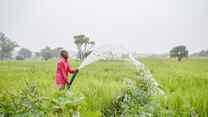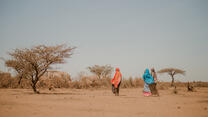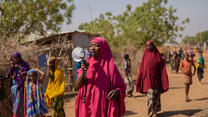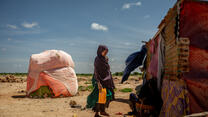In the last 30 years, extreme poverty has dropped by more than half, lifting over one billion people out of poverty. But this trend masked a dangerous divergence between stable and fragile settings. By the end of this decade, it is estimated that two-thirds of the world’s extreme poor will live where poverty is hardest to eradicate: places marked by conflict and fragility. People in these settings face double jeopardy: they live in states where poverty is on the rise, which are often the same ones hit hardest by fragility, conflict, displacement, climate change, debt distress, and other global risks.
Laudable poverty alleviation has left extreme poverty in fewer places, but seen it become entrenched in some of the world’s most challenging contexts. Humanitarian actors like the International Rescue Committee (IRC) are too often shouldering responsibility for these populations, helping people to survive with little hope of recovery.
While humanitarian aid is irreplaceable in meeting the immediate needs and preventing worst-case scenarios, a complementary development approach is crucial in addressing medium- and long-term challenges. In most conflict-affected and fragile states, windows of opportunity for World Bank programming still exist.
The World Bank has an impressive track record lifting people out of poverty, but this final frontier of extreme poverty is new territory. The Bank’s traditional tools for financing and delivery depend on national government’s capacity, but this is precisely what is often lacking in these settings. As long as the World Bank orients around government partners, financing will flow to where it is easiest to deliver — not where it is most needed. Hundreds of millions of the most at-risk people will lose out by design.
A new paradigm is required. Greater funding is required, but it should come alongside reformed delivery mechanisms to unlock the full potential of World Bank programs. The World Bank should seize the opportunity of its Evolution Roadmap this year to commit to a people-first, rather than government-first, operating model. Where governments can deliver, they should be supported; where they cannot fully, the Bank should crowd in a wider range of partnerships with civil society to scale up capacity and enable these contexts to absorb more financing. These partnerships can enable higher risk tolerance to promote truly inclusive development, reaching people in the most challenging contexts.
Together, the World Bank, development actors and humanitarians can leverage their complementary mandates to drive more support to these communities and meaningful improvements in the day-to-day lives of millions.



